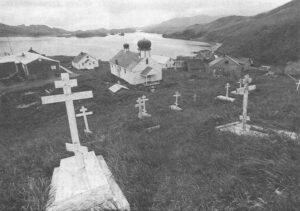Lael Morgan
- 1972

Fellowship Title:
- Alaskan Eskimos, Aleuts and Indians in Transition
Fellowship Year:
- 1972

Alaskan Natives Gain Political Punch
Fairbanks, Alaska December 30, 1972 Six years ago the Alaskan native was a political nonentity. Statewide candidates, the state legislature, polsters – just about everybody but the welfare agencies – ignored him. Under the U.S. Constitution he had a vote, of course, but he wasn’t expected to use it. Today, although Indians and Eskimos represent only a fifth of Alaska’s population, their vote constitutes 25 percent of the total ballot, which no statewide politician can afford to ignore. Nine Eskimo and Indian delegates currently serve in the state legislature, which is more than the total number of Indian representatives in the rest of the United States. And voter education is high priority in future planning of native leaders. The potential of the native electorate was first recognized in 1965 when Democrat Mike Gravel, then speaker of the State House, figured if he could garner the “Bush” vote, he could win a statewide election, even if he lost in all three major cities. With this in mind, he backed the building of regional high schools

Angoon Indian Village Moving up on the Political Totem Pole
Angoon, Alaska December 8, 1972 At the top of the political totem pole is John Borbridge; urbane, well-educated, city-bred chief of the Tlingit Indian people. Many believe him to be an inspired leader. Others charge he is a politically ambitious self-seeker; a “God Father.” John Borbridge At the base of his totem are 18 Indian villages in Southeastern Alaska; all electrified but in varying degrees of modernization otherwise. Angoon, an isolated fishing community of 400 on Admiralty Island, is at the bottom; reporting the lowest median income in Alaska ($2,154 as compared to neighboring Juneau’s $16,073 according to the 1970 U.S. Census), in a section of the state where poverty is not generally a big problem. Some observers believe there is a serious and growing gap between native leaders and the disadvantaged villages they represent. The concern is not limited to the Tlingits, but shared by widely varying groups of natives throughout Alaska. Their leaders were sophisticated enough to unite and push a billion dollar, 40 million acre land claims settlement through the U.S.

An Eskimo Community Battles the Bottle
Bethel, Alaska December 6, 1972 Wearily, Bethel Police Chief Tom Dillon went through his files: “The man had frozen to death within 15 feet of the door to the house where the party was in progress. We figure he got sick, went outside and somebody locked the door. Never heard him trying to get back in. “One woman died from exposure in an abandoned house. She’d gone there, intoxicated, for the purpose of prostitution. Must have passed out. The customer left and she froze. “New Year’s Eve we had a snow machine take off. Found the driver later a quarter of a mile from a house. Held fallen off and frozen. The machine was still in working condition….” Tom Dillon, Bethel police chief. Last year the Bethel Police Department had 14 similar reports to file under “Alcohol-related Deaths.” This year there have been four and, hopefully, next year there will be less. For Bethel, an Eskimo settlement of under 3,000, is making war on alcoholism. The odds against the town are as

Atka – The Place the Tsar, the U.S. Government and Even God Forgot
Atka, Alaska October 14, 1972 Atka, furthest west settlement in the Aleutian Islands, has no zip code, no post office, no functioning dock and no airstrip. Its only communication with the outside world is a fickle 50 watt radio and an ancient Navy tug, dispatched there once monthly, weather permitting – and the weather is the roughest in the world. The island has 87 permanent residents of Russian-Aleut stock. They survive by working off-island part of the year and by subsistence hunting when they return with their modest savings. They love the huge, mountain-vested volcanic rock they call home and have fought hard to remain there. They are quiet, uncomplaining people, but they rank as the most neglected citizens in the United States. The only way to get to Atka is through Adak Naval Base, 100 miles east, and military clearance is required. I was told to make arrangements through the Bureau of Indian Affairs (BIA) office in Anchorage but it proved tedious. They were vague about departure date; not even sure there would

Letter from Alaskan United Crow Bands Indians to the Secretary of Interior:
Tanacross, Alaska 1969 “We are placing no blame on anyone personally, but feel there have been freezes and regulations passed to protect us and we are being slowly squeezed to death…. “No one has ever come out and talked to us to see what we think or how we feel about what is going on. “We are not a chess game. We are human beings and right now very upset and disturbed people. “We feel our land, and what it has grown, has fed, clothed and helped us survive. Do you wonder why we are fighting to keep it?” Chief IsaacTanacross, Alaska 1969 History 1884 – The first white man comes to Dot Lake, heartland of the United Crow Bands, a tribe of over 1,000 Athabascan Indians in central Alaska. 1917 – The United Crow Bands try unsuccessfully to get title to their lands from the U.S. Government. 1950 – United Crow Bands file for reservation status through the Bureau of Land Management (BLM). The claim is “lost” until November 1961. Then the
